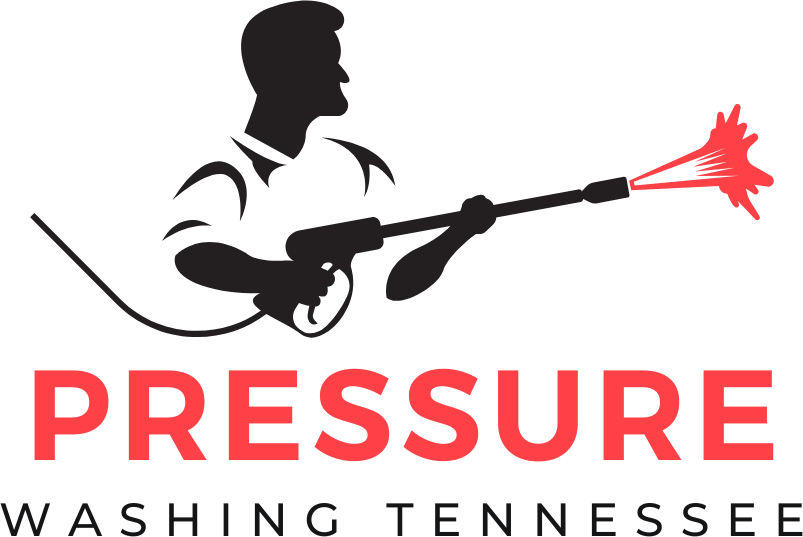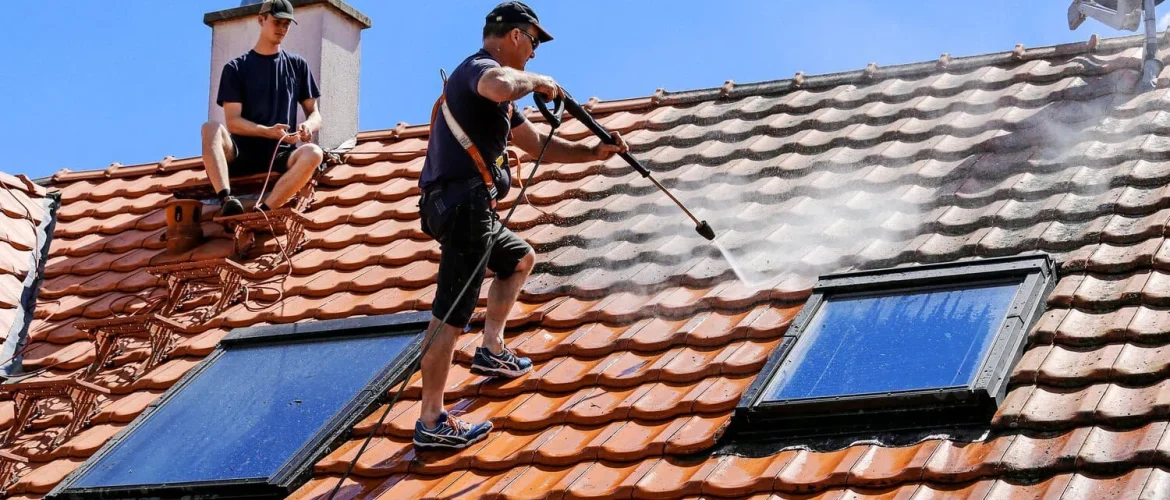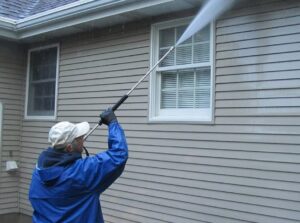When it comes to keeping my roof looking its best I want a cleaning method that’s both safe and effective. With so many options out there it’s easy to feel overwhelmed by the choice between soft washing and pressure washing. Each promises a spotless roof but only one truly protects my investment for years to come.
I know my roof isn’t just about curb appeal—it’s about safeguarding my home and everything inside. That’s why understanding the real differences between soft washing and pressure washing matters. If you’re ready to make the right call for your roof’s long-term health you’ll want to know which method delivers the results you expect without risking costly damage.
Understanding Roof Cleaning Methods
I’ve seen two main approaches for roof cleaning: soft washing and pressure washing. Each uses water as the primary cleaning tool, but the delivery and results differ.
With soft washing, I apply a low-pressure stream mixed with specialized cleaning solutions—these often include biodegradable detergents and algaecides. The solution breaks down mold, algae, and dirt before rinsing everything away with gentle water pressure. Asphalt shingle, tile, and slate roofs, for example, benefit from this method because it keeps protective granules intact and avoids surface damage.
Pressure washing, on the other hand, relies on a powerful, high-pressure stream to blast away grime quickly. This method works well for tough surfaces like concrete driveways or metal roofs, where surface durability isn’t a concern. But, using this force on roofing materials—such as shingles or wood shakes—can strip protective layers or even dislodge tiles.
When I assess which method suits a particular roof, I consider the material, the amount of buildup, and any signs of damage. I also pay attention to the local climate and manufacturer recommendations, which often guide whether chemical treatments or straightforward water jets will work best. Matching the cleaning technique to the roof type extends its life and maintains its barrier against weather.
What Is Soft Washing?
Soft washing offers a gentle way to clean roofing materials, protecting both the roof’s structure and its appearance. This method targets stains and organic growth without harsh pressure.
How Soft Washing Works
Soft washing uses a low-pressure water spray paired with eco-friendly cleaning solutions. These solutions break down mold, algae, and grime—examples include black streaks or green patches on shingles. I let the cleaner soak briefly before rinsing, allowing it to lift away build-up without damaging the surface. This process keeps granules on asphalt shingles and leaves materials like tile or slate intact.
Pros and Cons of Soft Washing
Pros
- Prevents roof damage by using gentle pressure
- Removes algae, moss, and bacteria at the root
- Keeps protective coatings on shingles and tiles
- Works for asphalt, slate, and tile roofs
- Needs more time for cleaning solutions to work
- Sometimes requires repeated applications for heavy build-up
- Depends on the right detergents to kill organic growth, with limited options for heavy dirt or non-organic stains
What Is Pressure Washing?
Pressure washing relies on a strong stream of water to blast away dirt, stains, and debris from surfaces fast. For roof cleaning, this method targets tough grime that collects over time and can help refresh the appearance of the structure in minutes.
How Pressure Washing Works
Pressure washing cleans by forcing water through a hose at 1,300 to 3,000 PSI. I use a trigger-style wand to aim the flow, breaking up layers of moss, algae, and dirt that stick to the roof. Most setups include adjustable nozzles, letting me either concentrate the stream for stubborn spots or widen it for general debris. Some systems mix in detergents to help break down grease or stains faster.
Pros and Cons of Pressure Washing
Pressure washing can produce fast, visible results, especially for surfaces like concrete or metal. It clears heavy buildup, removes old paint, and lifts debris that’s hard to scrub off by hand. I save time compared to gentler cleaning methods.
But, the high pressure can strip away shingle granules, dislodge tiles, or create leaks if the roof has any weak spots. Pressure washing also doesn’t kill algae and mold spores fully, so these often return sooner. For roofing, this method works best on hard surfaces but can shorten the life of materials like asphalt shingles or clay tiles.
Key Differences Between Soft Washing and Pressure Washing
Soft washing uses gentle water pressure and a blend of cleaning agents to treat roof stains and growths. This technique lets me clean asphalt shingles, clay tiles, or slate without wearing away protective layers or causing cracks. Because soft washing doesn’t rely on force, I can safely address moss, algae, and bacteria that settle deep in roof materials.
Pressure washing delivers strong jets of water—up to 3,000 PSI—to blast away dirt and grime on sturdy surfaces. This method works quickly, especially on concrete paths or metal roofing. When I use pressure washing on a typical roof, there’s a risk of stripping off granules and loosening roofing components. The force might also leave the surface exposed to water intrusion.
Cleaning solutions only play a minor role in pressure washing, while soft washing centers on a mix of detergents that break down dirt and kill hidden spores. This means I get results that last longer with soft washing, since growth is removed at its source.
If looking at timing, pressure washing is fast but can lead to recurring mold. Soft washing takes extra time but keeps surfaces stable and cleaner for longer periods.
Here’s a quick comparison:
| Feature | Soft Washing | Pressure Washing |
|---|---|---|
| Pressure Level | Low (under 500 PSI) | High (1,300–3,000 PSI) |
| Cleaning Agents | Required, specialty solutions | Optional or light detergents |
| Surface Safety | Safe for delicate shingles and tiles | Risk of damage on most roofs |
| Results Duration | Lasts longer by treating root growth | Faster results, shorter-lasting |
| Applications | Asphalt, tile, slate roofs | Metal, concrete, stone |
Each method gives a unique cleaning experience, but only soft washing balances surface safety with lasting cleanliness, especially on residential roofs. I’ve found that understanding these differences helps me pick the right method for every job.
Which Method Is Safer for Your Roof?
Soft washing offers a safer approach for most roofs, including asphalt shingles, tile, and slate. Gentle cleaning solutions break down stains and organic growth, all while keeping the protective layers and surface granules intact. I find this method keeps roof materials in good condition, so any risk of accidental shingle or tile damage stays low.
Pressure washing pushes water at high force, and while it works on sturdy materials like concrete, it creates problems for typical residential roofs. The powerful spray can knock granules loose, crack tiles, or even force water under the layers. If there’s even minor wear or weakness on the roof, pressure washing speeds up deterioration—leading to leaks or costly repairs later.
Industry experts and manufacturers, such as the Asphalt Roofing Manufacturers Association, frequently recommend soft washing to prevent warranty voids or damage. My experience echoes this guidance: for lasting results and a protected roof structure, soft washing is the safer route in all but the rarest instances. For roofs that show previous damage or use delicate materials, soft washing especially outperforms pressure washing as the least risky option.
Cost Considerations and Maintenance Factors
When deciding between soft washing and pressure washing, comparing costs can help set clear expectations. On average, soft washing costs between $250 and $600 for a standard residential roof, according to local service estimates in 2024. Pressure washing usually falls in a similar range for the same size, but some companies add extra charges—up to $100 more—for roofs with sensitive materials that require special care.
Another factor I consider is long-term savings. Soft washing targets moss and mold at the roots, keeping regrowth to a minimum. Many roofs stay cleaner longer, reducing how often I need to schedule another cleaning. In contrast, pressure washing might need repeating every 6 to 12 months, especially if algae and lichen reappear quickly.
Maintenance needs also differ. After soft washing, I check for any loose shingles or minor leaks since the process is gentle and allows easy inspection without disturbing the surface. Roofing experts like the Asphalt Roofing Manufacturers Association confirm that soft washing preserves warranties because it doesn’t strip away protective coatings. Maintenance after pressure washing often requires more attention. If granules or tiles get dislodged, repairs become necessary, which can add an extra $200 to $700 per job, based on common repair rates.
Soft washing also uses less water—often about 60% less per job compared to pressure washing—so my utility bills sometimes reflect the difference. This lower water usage helps keep costs manageable over time as part of my overall roof care routine.
| Method | Typical Cleaning Cost | Maintenance Schedule | Potential Repair Cost | Water Usage |
|---|---|---|---|---|
| Soft Washing | $250–$600 | 1–2 years between visits | $0 (minimal surface impact) | Lower (60% less) |
| Pressure Washing | $250–$700 | 6–12 months between visits | $200–$700 (if surface damage) | Higher |
Conclusion
Choosing the best cleaning method for your roof isn’t just about appearances—it’s about long-term protection and value. I’ve seen firsthand how the right approach can save money and prevent headaches down the road.
If you’re unsure which method fits your roof’s needs, don’t hesitate to consult with a trusted professional. Your roof deserves careful attention so it can keep your home safe and looking its best for years to come.


